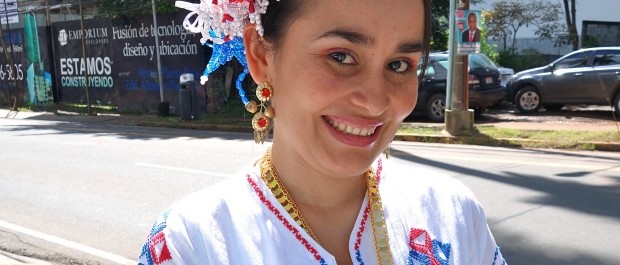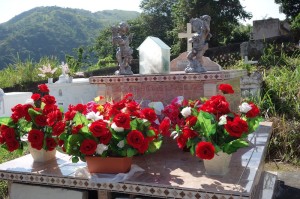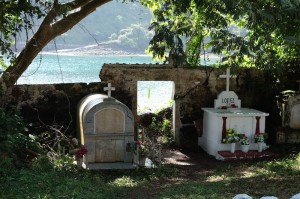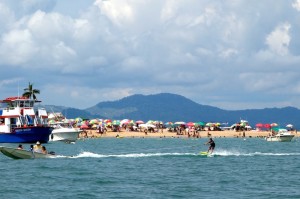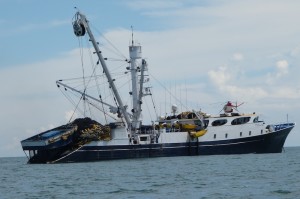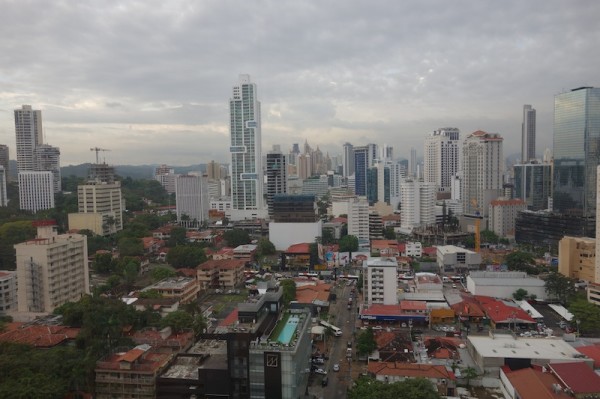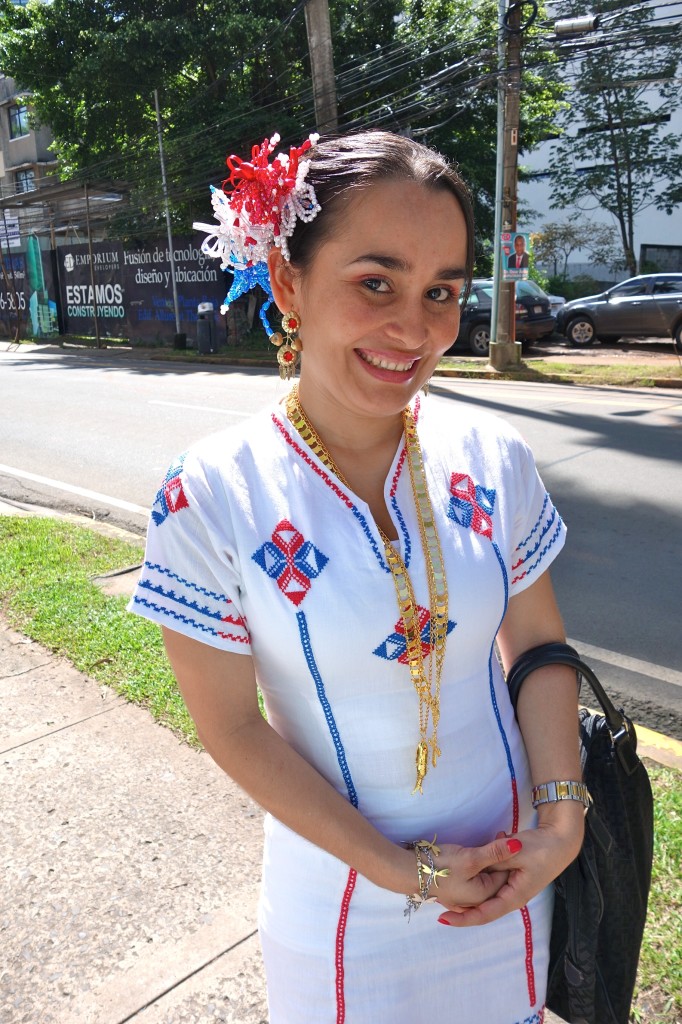 It’s the month of November when Panama’s calendar is larded with ‘fiestas patrias‘; such as independence from Spain, and independence, or ‘separation,’ from Colombia. Each holiday gets an associated long weekend, and some fireworks and music. Even the Panamanians will tell you not to count on getting much done in November.
It’s the month of November when Panama’s calendar is larded with ‘fiestas patrias‘; such as independence from Spain, and independence, or ‘separation,’ from Colombia. Each holiday gets an associated long weekend, and some fireworks and music. Even the Panamanians will tell you not to count on getting much done in November.
I noticed this girl on the street, and so did most everyone else, including drivers who honked their horns and men in the back of trucks who shouted compliments. She thanked me for asking to phot0graph her. No, no, I Thank You! Isn’t it nice to see someone so well put-together for a holiday?
And then there are these people, also put together for their holiday, you might say:
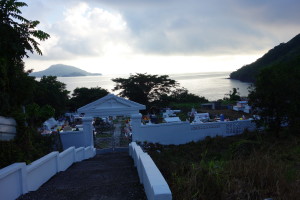
It’s the Day of the Dead, or on Taboga, or the weekend of the dead, since family members don’t seem to come specifically for the cemetery. Despite the island having been inhabited since 15XX, the oldest tomb I saw was from 1910. There’s no food set out, no parties, and we were the only visitors I saw, but there was plenty of fresh paint and the finest in artificial flowers, plus that special contemplative atmosphere.
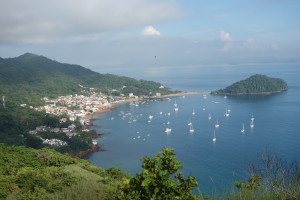
We have had the boat on a mooring at Isla Taboga, about five miles offshore of Panama City, while we did some travelling. I gather that there once were a number of US military and/or canal facilities on the island, but there’s not much of that left now. The rubble upon which the road is based is full of ceramic tiles from, I’m guessing, those demolished US facilities.
Chuy and Susan, at tabogaislandmoorings, have a nice little business for most of the year looking after boats for absentee owners on their sturdy moorings in 50-60 feet. Galivant is the sailboat closest to the ferry dock.
The water is pretty clean and warm, but the anchorage has been rolly recently so it’s hard to scrape growth off the bottom of the boat. Instead we took a hike to the cross atop the hill for a look at the scenic vista.
Down at the beach on the first November holiday weekend, people were doing the usual beachy things in a low-key way. There were modest parades in the village ( population 500 people, Susan guessed); mainly illustrating the inordinate popularity of the snare drum.
This beach, most of which is the sandspit extending to a little island, entirely disappears on the higher tides, so the chairs and umbrellas are constantly moving. Signs warn against swimming there at the height of the tide, due to the stong current.
It took four full ferries to get the visitors back to the mainland on Monday afternoon. Luckily, it’s less than an hour’s ride, and there are three boats available.
Galivant left the next day for the fruits and vegetables of the Big Smoke, Panama City. On the way into town we passed this fishing vessel, the purse-seiner Taurus Tuna, registered in Venezuela. With Taurus‘s tiny helicopter on the cabin top and a big net and net-setting boat on the stern, any tuna will be lucky to escape. When I Googled for factoids about this vessel, I found various information sites offering up its vital numeric statistics (78 meters, 1800 Gross Metric Tons), but nothing that interested me as much as a YouTube video forbidden to me by my present internet connection, which purported to describe this vessel in some kind of confrontation with sportfishers off Costa Rica in 2011. I wonder…
My interest in this tuna boat was piqued by a tour I was given 20 years ago aboard a larger US tuna fishing boat of the Zapata fleet out of San Diego I think it was. So much was astonishing about the vessel; what I most remember was that an entire whole ungutted tuna the length of a baseball bat, and the width of a telephone pole, was flash frozen and being pitched into the storage freezer within five seconds of emerging from the net.
Later we saw the canning process in Pago Pago, Samoa, might have been a Chicken of the Sea plant. The workers were mostly women in rubber boots being paid a dollar an hour; the ‘spring water’ was actually from a Samoan ‘spring’, and the waste from the plant contributed to less than salubrious conditions in the harbor. At the time I thought ‘it must cost a lot to ship those empty cans out here; too bad they can’t make them smaller for shipping’ and now it’s done – lo and behold, the flavor-fresh pouch! I still buy tuna, although less than I used to, and am surprised to find here that they sometimes add vegetables like peas and carrots, as if to make it a balanced meal in a can.
Panama City itself still seems like a boom town; so much is happening on the skyline, and there’s so much traffic and noise that it’s hard to imagine how it once was, or might be. The glitzy parts of town have that veneer, however I wonder about their water and power supply, and parking, and their sewage disposal, for starters. Building codes and planning seem very loosely enforced but I guess things will work out about as they generally do.
Here we have yesterday’s structure pushed aside to make room for something else, but what? A luxury tower, with some lucky views toward the ocean and the green ribbon of waterfront park that the Martinelli administration hopes will be one of its crowning achievements? And some unlucky views into the neighboring tower’s bedrooms?
Now that we have migrated back to Panama, temporarily, and to a new blog home, I’ll be working to get a handle on uploading images and resolving the various glitches of my blogging career.
Just because the next post may say Ecuador, doesn’t mean we’re not still in Panama! But we’re planning to move towards Costa Rica and Nicaragua.
